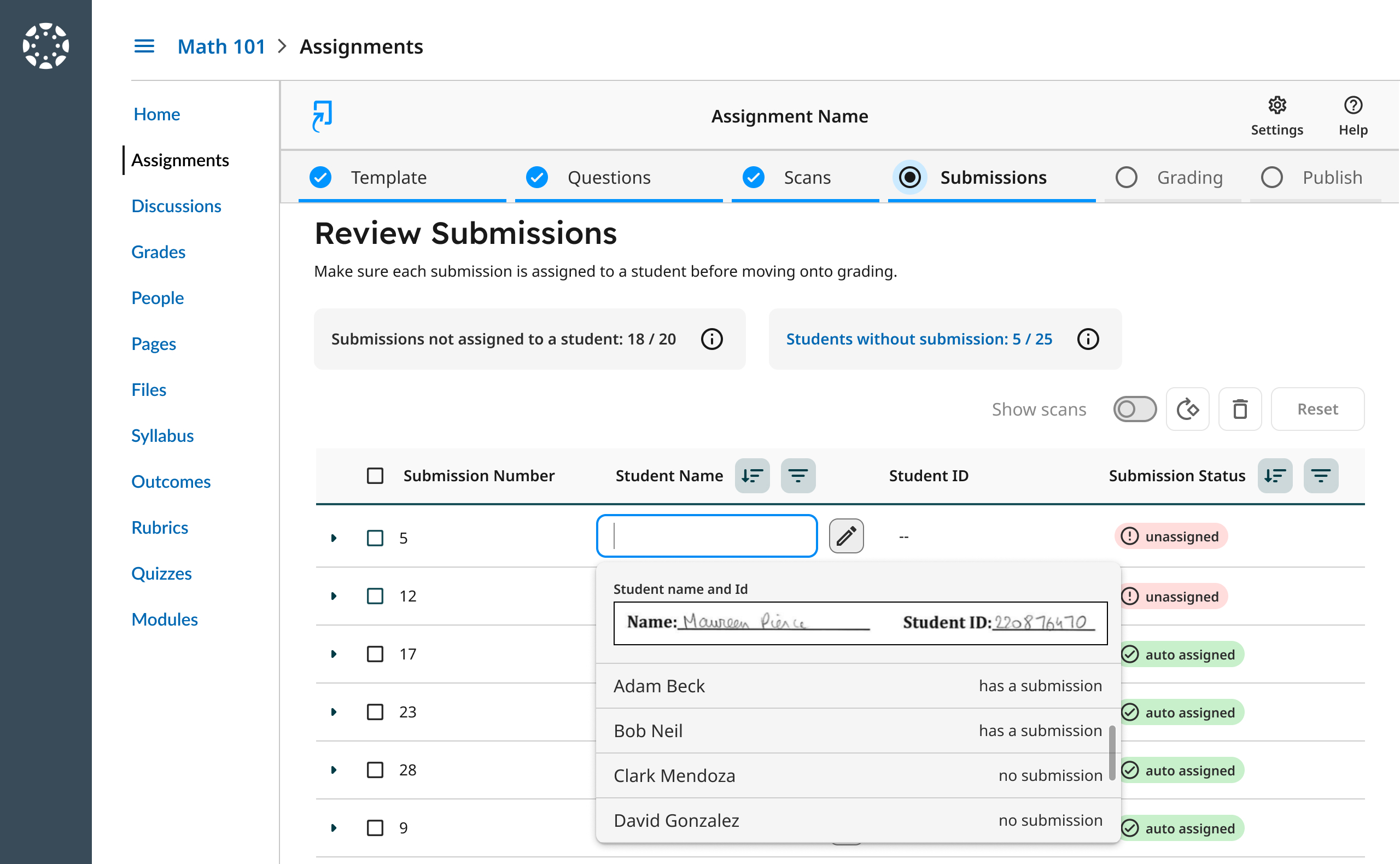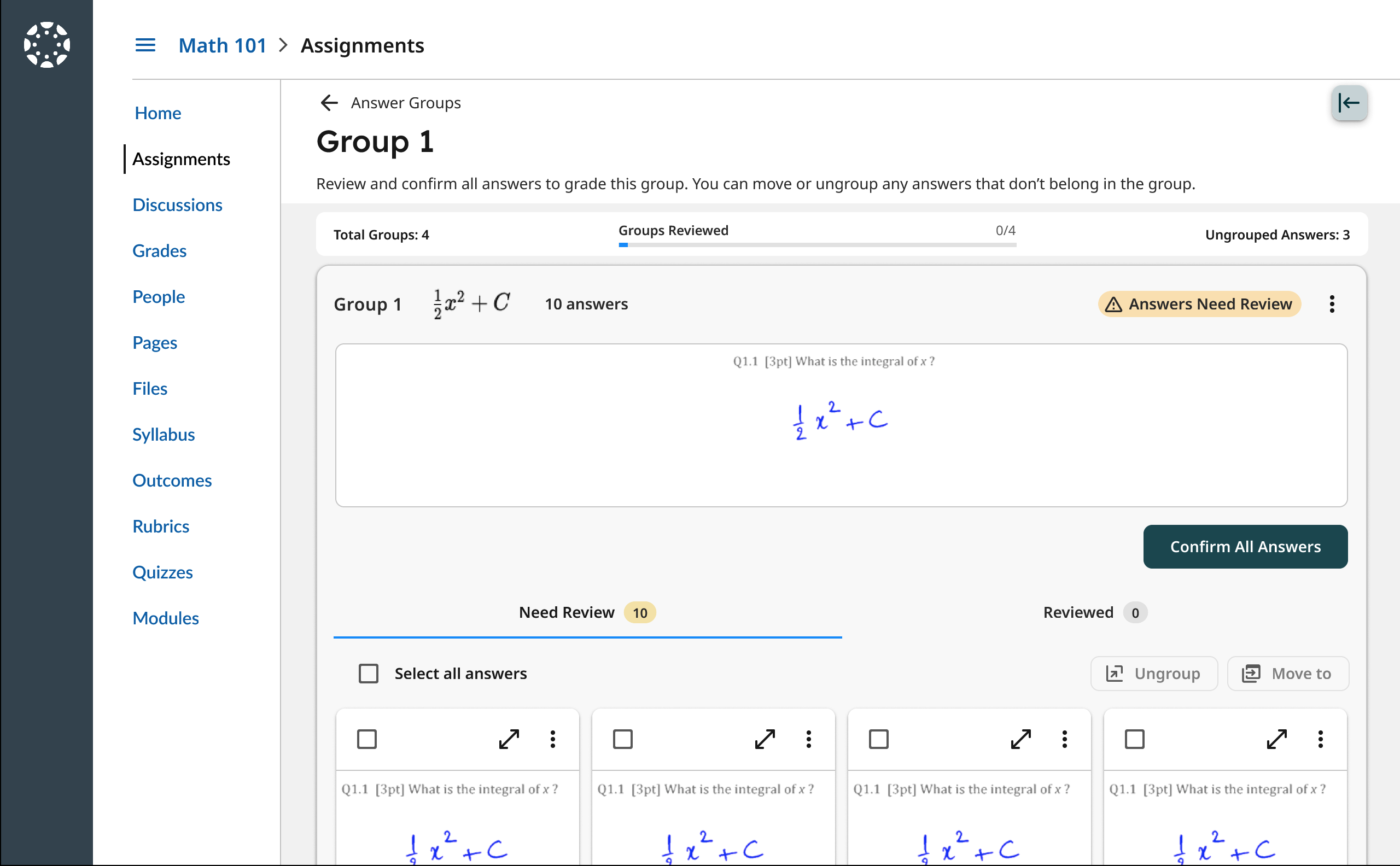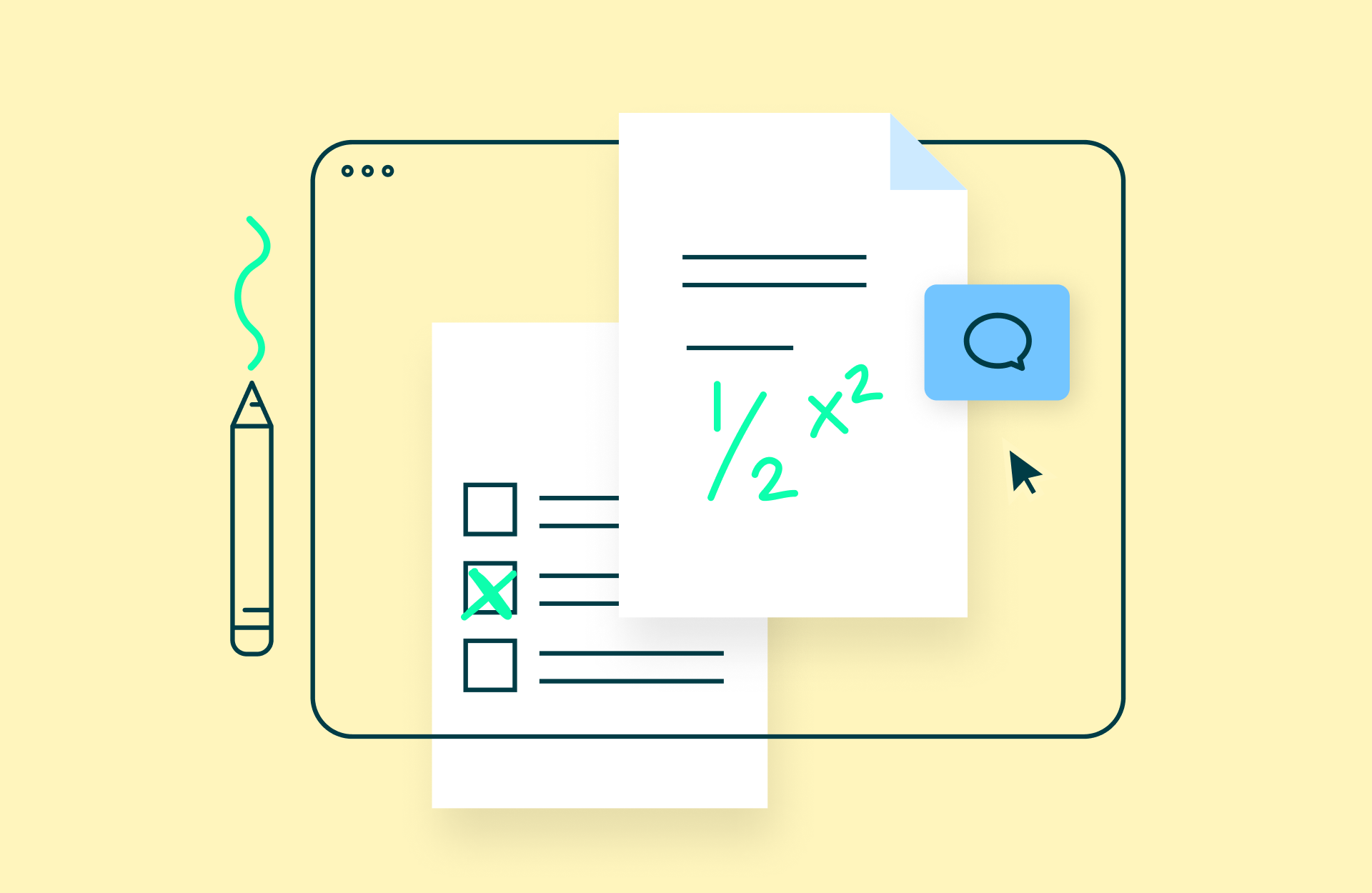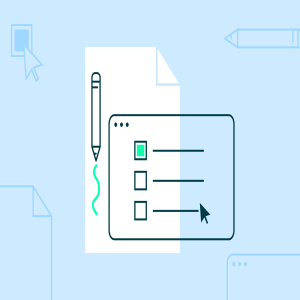Despite the rapid advancement of digital tools in education, paper-based assessment continues to play a key role in many academic courses, offering unique benefits that digital methods can't entirely replicate.
However, the traditional approach to managing and grading paper-based assessment often comes with significant logistical and administrative challenges.
With Turnitin’s new Paper to Digital add-on for Feedback Studio, instructors can overcome the divide between traditional paper assignments and digital efficiency. This innovative tool promises to revolutionize the grading experience, offering faster feedback, enhanced security, and integration directly into your learning management system (LMS).
In this blog post, we’ll explore the lasting relevance of paper-based assessment and how Paper to Digital embraces the benefits of paper, while addressing many of its inherent challenges. By bridging the gap between the tactile and the technological, instructors can leverage the best of both worlds to create a more robust and equitable assessment process.
Why is paper-based assessment still relevant?
Digital solutions often dominate discussions around productivity and innovation in education, with the enduring presence of paper-based assessment seeming like a relic of the past, but beneath the surface, lies a steadfast utility that continues to make paper-based assessment indispensable in educational settings worldwide.
In a 2020 Norwegian study carried out by Askvik, van der Weel and van der Meer, findings suggest that handwriting could be more beneficial than typing—not to mention the fact that paper offers unparalleled accessibility and universality, ensuring all students can participate regardless of their access to technology.
The tactile experience of pen and paper has also been argued to foster deeper cognitive engagement, particularly beneficial in subjects like mathematics and art. In a psychology study by Mueller and Oppenheimer (2014), they found that students who took notes on laptops performed poorer on conceptual questions compared to those who used longhand methods. They determined that laptop note takers’ tendency to transcribe lectures verbatim rather than processing information and reframing it in their own words is detrimental to learning.”
Certain types of responses, such as complex formulas and intricate diagrams, often lend themselves more naturally to paper-based formats. The freedom of movement and space afforded by physical paper can facilitate a deeper level of expression than digital constraints might allow.
It’s also worth noting that paper-based assessment provides a controlled and reliable testing environment free from the technical glitches and connectivity issues that have been found to plague digital platforms. This standardized approach promotes equity among students, giving all learners a fair assessment experience across diverse educational settings.
What are the drawbacks of paper-based assessment?
While the benefits of paper-based assessment are clear, they do present their own set of unique challenges, with one of the most significant drawbacks being how difficult it is to distribute, collect, and grade so many paper assessments; this can be time-consuming and prone to errors through misplaced or lost student work. Additionally, the manual oversight required to prevent cheating during paper-based assessment adds another layer of complexity and potential risk.
Paper-based assessment often results in time-intensive grading processes. Instructors must manually evaluate a variety of assessment types—from short answers to complex diagrams—which can lead to inconsistent quality and quantity of feedback as well as delays in providing timely feedback to students.
In a 2023 UK Department for Education report, it was found that teachers spend more time on admin than teaching, with general admin work impacting 77% of secondary/high school teachers. Around 50% said that manual marking (grading) took up “too much” of their time.
Delays in receiving feedback can result in frustration for students; it limits opportunities for immediate learning reinforcement and improvement. The manual nature of paper (or any type) of grading makes it challenging to gain meaningful insights into student performance and areas needing instructional focus, hindering instructors’ ability to tailor their teaching effectively.
How can Paper to Digital improve grading efficiency?
The integration of Turnitin’s Paper to Digital add-on in Feedback Studio represents a pivotal step towards boosting the efficiency of paper-based assessment. Supporting various assessment types within the tool you’re already using, it seamlessly blends the familiarity of paper with the technological advancements of digital tools.
This integration not only addresses the logistical challenges associated with paper-based assessment but also enriches the overall educational experience. Paper to digital improves grading accuracy and consistency across every submission, whilst giving educators the tools they need to provide timely feedback.
Automatic roster matching
One of the standout features of Turnitin’s Paper to Digital is its automatic roster matching capability, eliminating the cumbersome tasks associated with manual paper logistics. Instructors can effortlessly upload scanned student work, and Turnitin automatically splits bulk files into individual submissions.
Leveraging Optical Character Recognition (OCR) technology, Paper to Digital accurately matches the handwritten name on each submission with the corresponding student on the roster by detecting name and ID regions. This means no mix-ups between papers or anonymous submissions.
Additionally, instructors can easily identify which students didn’t match to a submission and quickly assign it to them, providing a necessary manual intervention when needed.
Automated roster matching not only frees up valuable time that can be directed towards providing meaningful feedback and improving instructional delivery, but also enhances integrity and accuracy in grading, ensuring every student receives a fair and prompt evaluation.

Seamlessly integrated with Feedback Studio
Paper to Digital integrates with Turnitin’s flagship solution, Feedback Studio. This add-on consolidates both paper-based and digital assessments into a unified platform, allowing instructors to manage their assessments without navigating between multiple systems. Since many instructors are already familiar with Feedback Studio, there's no additional learning curve or need to switch platforms.
This integration extends further with fuss-free compatibility across widely used Learning Management System (LMS) platforms via LTI 1.3 standards. By centralizing assessment management in Feedback Studio, instructors can simplify their workflows and maintain consistency in grading practices. Whether handling paper-based exams or digital assignments, the integrated approach ensures a cohesive user experience while leveraging the robust features of Feedback Studio for comprehensive assessment management.
By taking advantage of existing setups, instructors can create assignments the same way, use the same roster, and publish grades directly to the Turnitin gradebook without the need for an external tool. This not only simplifies workflows and reduces potential errors but also shaves off valuable administrative minutes.
Fast, consistent feedback for every student
Paper to Digital transforms the assessment cycle by delivering timely and comprehensive feedback, minimizing the traditionally lengthy feedback loop for students. Leveraging digital grading capabilities, the platform enables dynamic scoring that updates retroactively. For example, if an instructor needs to adjust a score, they can do so easily, and the updates will apply to all relevant submissions, ensuring quick and consistent feedback for every student.
This is further enhanced through refined grading workflows, including answer grouping and horizontal grading, which facilitate the provision of rich, submission-specific feedback at a rapid pace. Instructors can publish graded assessments directly to students without delays, ensuring that feedback is promptly accessible.
The integration of scoring guides and annotation tools supports detailed feedback that clarifies where points were earned and addresses learning gaps swiftly and comprehensively.
By supporting multiple graders, Paper to Digital also accelerates turnaround times, enabling instructors to manage assessments efficiently and ensure students receive timely insights into their performance. This approach fosters a more engaging and effective learning environment where formative assessment continues beyond assignment deadlines, empowering students to continuously improve based on actionable feedback.
AI-assisted grading and answer grouping
A recent preprint paper by University of Michigan researchers, Wang, Pei, and Li, revealed a significant correlation across 30 million grading records: students with surnames lower in the alphabet tend to receive lower grades. This bias stems from sequential grading practices exacerbated by the default alphabetical ordering of student submissions in learning management systems (LMS).
Paper to Digital eliminates grading bias. AI-assisted grouping and horizontal grading by question streamline the evaluation of diverse assignment types. This involves grouping similar answers together across variable-length assignments, like problem sets and projects, or fixed-template assignments, such as worksheets, quizzes, or exams. Instructors are then able to provide feedback to multiple students simultaneously, doing away with tedious grading tasks.
Paper to Digital offers both automatic and manual grouping options, ensuring flexibility in assessment management across various question types. This approach not only accelerates grading but also guarantees consistency in feedback delivery across all student submissions.
These AI-driven features empower instructors to focus more on analyzing student performance and identifying learning gaps, thereby facilitating fair evaluation and maintaining integrity across assessments.

Does Paper to Digital allow for multiple graders?
Paper to Digital in Feedback Studio offers the benefit of horizontal grading, where one question is graded at a time. This approach helps remove bias by ensuring that student information and other answers on their submission are not visible, allowing for greater objectivity in evaluating how all students respond to each question. It also provides a focused sense of whether the material is understood by the entire class.
Horizontal grading allows instructors to collaborate effectively, providing the flexibility to split work between a group of markers. This method facilitates alignment in grading criteria, standards, and practices, minimizing discrepancies that may arise from individual grading styles or interpretations of assessment criteria. Paper to Digital ensures there's no overlap when marking, always progressing to the next ungraded submission.
The primary aim of horizontal grading is to promote equitable evaluation of student work, regardless of which instructor is grading. By standardizing assessment practices, Paper to Digital helps reduce bias and ensures that all students receive fair treatment in their evaluations. This collaborative approach enhances grading consistency and also supports educational integrity by maintaining uniformity in assessment outcomes across diverse teaching environments.
How will Paper to Digital help me to uphold academic integrity?
Paper to Digital offers robust tools to uphold rigorous academic integrity standards effectively.
Unlike manual review, which can be impractical due to workload constraints, Paper to Digital creates secure, locked digital copies of students' original submissions. This feature enables instructors to easily reference and verify submissions, identifying any alterations made after grading and ensuring the validity of assessments.
Our auto grouping and horizontal grading capabilities play a key role in detecting anomalies or trends in student responses. For example, by systematically analyzing submissions, instructors can identify irregularities such as a group of questions that are suspiciously similar or wrong in the same way, which can indicate possible collusion. By proactively identifying and addressing potential issues, Paper to Digital maintains assessment integrity through accountable and informed actions.
With such a proactive approach to feedback, the reliability of the grading processes is amplified, fostering a climate of trust and fairness in all educational assessments.
How can my institution access Paper to Digital?
Paper to Digital is available both via the Turnitin website and through your chosen LMS.
If you use an LMS integration to access Feedback Studio, you must upgrade to LTI 1.3 to benefit from Feedback Studio’s new features. This upgrade will provide enhanced functionality, improved security, and a better integration experience.
Overview: Time to transform the grading experience
Paper-based assessment is here to stay, and its persistent relevance in educational assessment highlights the need for innovative solutions that marry the traditional with the digital.
Turnitin's Paper to Digital add-on for Feedback Studio addresses the inherent challenges of paper-based assessment through advanced AI and digital integration. By streamlining grading and strengthening the consistency of instructor feedback, institutions can foster a fairer and more effective assessment environment that upholds integrity.
This hybrid approach sets a new standard for assessment, balancing the benefits of traditional methods with the efficiencies of digital advancements to promote a more equitable and enriched learning experience.





